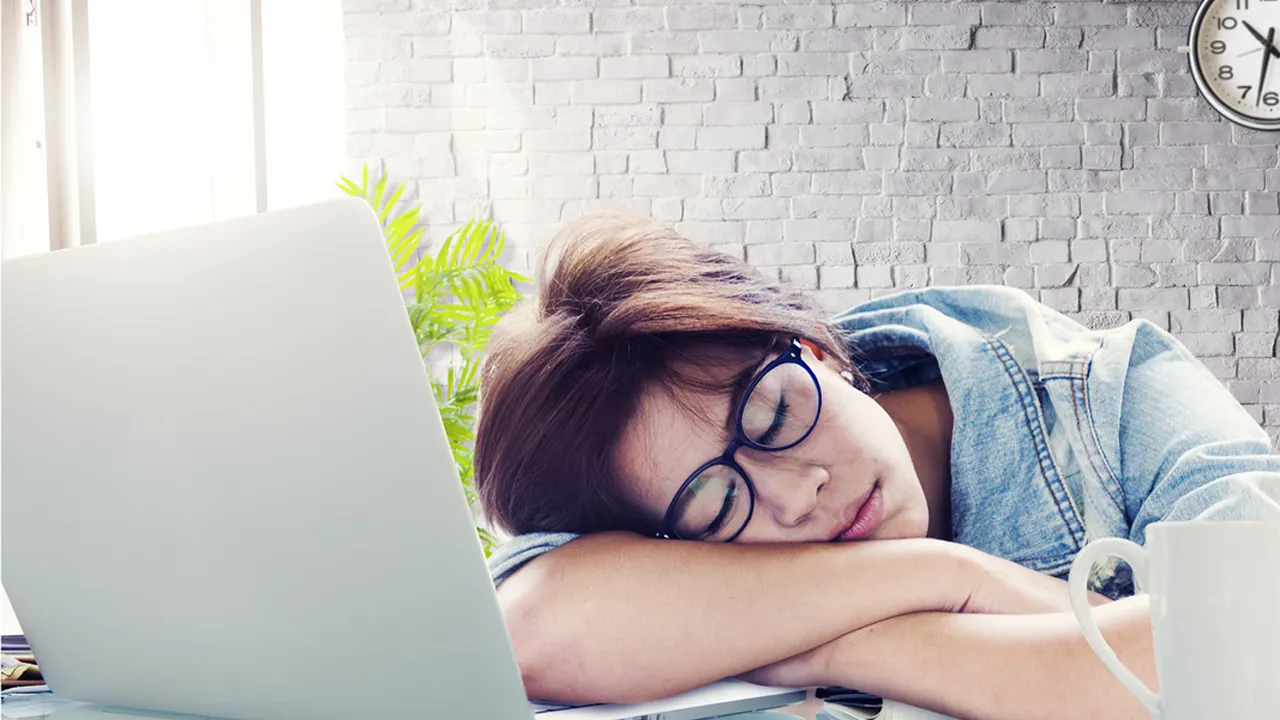Hypersomnia: Excessive Daytime Sleepiness Explained
Sample meta description.

Understanding Hypersomnia What is Excessive Daytime Sleepiness
Ever feel like you're constantly battling sleepiness, no matter how much you sleep at night? It's more than just feeling tired after a long day. We're talking about a persistent, overwhelming urge to nap, or even doze off, during the day, even when you've supposedly had enough sleep. That, my friend, could be hypersomnia.
Hypersomnia, also known as excessive daytime sleepiness (EDS), is a condition where you experience persistent and overwhelming sleepiness during the day. It's not just feeling a little sluggish; it's a constant battle to stay awake. Unlike the occasional tiredness we all experience, hypersomnia significantly interferes with daily activities, making it hard to focus, work, or even enjoy your free time.
Types of Hypersomnia Exploring Different Classifications
Hypersomnia isn't a one-size-fits-all condition. There are different types, each with its own underlying causes. Let's break down the main categories:
- Primary Hypersomnia: This is when the sleepiness is the main problem itself, not a symptom of another condition. Idiopathic hypersomnia falls into this category, meaning the cause is unknown. It's like your brain's sleep-wake switch is just stuck in the "on" position for sleep.
- Secondary Hypersomnia: This type is caused by another underlying medical condition, sleep disorder, or medication. Think sleep apnea, restless legs syndrome, Parkinson's disease, or even certain medications that have drowsiness as a side effect. Treating the underlying condition often helps resolve the hypersomnia.
- Recurrent Hypersomnia: This is less common and involves periods of excessive sleepiness that come and go. Kleine-Levin Syndrome is a rare example, characterized by episodes of hypersomnia lasting days or weeks, accompanied by cognitive and behavioral changes.
Symptoms of Hypersomnia Recognizing the Signs of Excessive Sleepiness
The most obvious symptom is, of course, excessive daytime sleepiness. But hypersomnia can manifest in other ways too:
- Difficulty Staying Awake: Constantly fighting the urge to doze off, especially in boring or inactive situations.
- Unrefreshing Naps: Taking naps, but still feeling tired afterwards. Naps don't provide the boost you'd expect.
- Prolonged Sleep: Sleeping for unusually long periods at night (10-12 hours or more) and still feeling tired.
- Difficulty Waking Up: Feeling groggy and disoriented for a long time after waking up (sleep inertia).
- Cognitive Impairment: Problems with memory, concentration, and decision-making. Brain fog is a common complaint.
- Irritability: Feeling easily frustrated and short-tempered due to constant fatigue.
- Anxiety: Worrying about falling asleep in inappropriate situations.
- Reduced Energy Levels: A general feeling of low energy and fatigue that makes it hard to participate in activities.
Causes of Hypersomnia Unveiling the Root of Daytime Fatigue
Pinpointing the exact cause of hypersomnia can be tricky, but here are some potential culprits:
- Sleep Disorders: Sleep apnea, narcolepsy, and restless legs syndrome can all disrupt sleep and lead to daytime sleepiness.
- Medical Conditions: Conditions like hypothyroidism, multiple sclerosis, and Parkinson's disease can contribute to hypersomnia.
- Medications: Certain medications, such as antihistamines, antidepressants, and sedatives, can cause drowsiness.
- Head Trauma: Brain injuries can sometimes lead to hypersomnia.
- Genetics: There may be a genetic predisposition to hypersomnia in some cases.
- Lifestyle Factors: Poor sleep hygiene, irregular sleep schedules, and excessive alcohol or caffeine consumption can worsen sleepiness.
- Neurological Issues: Problems with the brain regions that control sleep and wakefulness can cause hypersomnia.
Diagnosing Hypersomnia Sleep Studies and Assessments
If you suspect you have hypersomnia, it's important to see a doctor. They'll likely recommend a sleep study to evaluate your sleep patterns and rule out other sleep disorders. Common diagnostic tests include:
- Polysomnography (PSG): An overnight sleep study that monitors brain waves, heart rate, breathing, and eye movements.
- Multiple Sleep Latency Test (MSLT): A daytime nap study that measures how quickly you fall asleep and enter REM sleep. This helps diagnose narcolepsy and idiopathic hypersomnia.
- Actigraphy: Wearing a wrist-worn device that tracks your sleep-wake cycles over several days or weeks.
- Sleep Diary: Keeping a detailed record of your sleep habits, including bedtime, wake time, nap times, and any factors that might affect your sleep.
Treating Hypersomnia Managing Excessive Daytime Sleepiness
Treatment for hypersomnia depends on the underlying cause. Here are some common approaches:
- Addressing Underlying Conditions: If hypersomnia is caused by another medical condition or sleep disorder, treating that condition is the priority.
- Medications: Stimulant medications, such as modafinil (Provigil) and armodafinil (Nuvigil), can help promote wakefulness. These medications should be used under the guidance of a doctor. Other medications, like solriamfetol (Sunosi), are also available.
- Lifestyle Modifications: Improving sleep hygiene, maintaining a regular sleep schedule, and avoiding alcohol and caffeine before bed can help improve sleep quality.
- Scheduled Naps: Taking short, scheduled naps during the day can sometimes help improve alertness.
- Light Therapy: Exposure to bright light in the morning can help regulate your body's natural sleep-wake cycle.
Lifestyle Changes for Hypersomnia Improving Sleep Hygiene and Daily Habits
Even with medication, lifestyle changes play a crucial role in managing hypersomnia. Here's what you can do:
- Consistent Sleep Schedule: Go to bed and wake up at the same time every day, even on weekends, to regulate your body's natural sleep-wake cycle.
- Optimize Your Sleep Environment: Make sure your bedroom is dark, quiet, and cool. Use blackout curtains, earplugs, or a white noise machine if needed.
- Avoid Caffeine and Alcohol Before Bed: These substances can interfere with sleep.
- Regular Exercise: Exercise can improve sleep quality, but avoid exercising too close to bedtime.
- Healthy Diet: Eat a balanced diet and avoid heavy meals before bed.
- Manage Stress: Practice relaxation techniques like meditation or yoga to reduce stress and improve sleep.
- Limit Screen Time Before Bed: The blue light emitted from electronic devices can interfere with sleep.
Hypersomnia and Mental Health The Link Between Sleepiness and Well-being
Hypersomnia can significantly impact mental health. The constant fatigue and difficulty concentrating can lead to:
- Depression: Chronic sleepiness can contribute to feelings of sadness, hopelessness, and loss of interest in activities.
- Anxiety: Worrying about falling asleep in inappropriate situations or being unable to function properly can lead to anxiety.
- Irritability: Constant fatigue can make you more easily frustrated and short-tempered.
- Social Isolation: Difficulty participating in social activities due to fatigue can lead to social isolation.
If you're experiencing mental health problems related to hypersomnia, it's important to seek professional help. Therapy and/or medication can be beneficial.
Hypersomnia in Children and Adolescents Recognizing Sleepiness in Young People
Hypersomnia can also affect children and adolescents. It's important to recognize the signs, which may include:
- Excessive Daytime Sleepiness: Falling asleep in class or during activities.
- Difficulty Concentrating: Problems with schoolwork and attention.
- Irritability: Being easily frustrated and moody.
- Behavioral Problems: Acting out or having difficulty following rules.
- Poor Academic Performance: Falling behind in school due to difficulty concentrating.
If you suspect your child has hypersomnia, talk to their doctor. It's important to rule out other potential causes, such as sleep apnea or iron deficiency.
Hypersomnia vs Narcolepsy Understanding the Differences Between Sleep Disorders
Hypersomnia and narcolepsy are both sleep disorders characterized by excessive daytime sleepiness, but they have distinct differences:
- Narcolepsy: Typically involves sudden, uncontrollable episodes of falling asleep (sleep attacks), cataplexy (sudden muscle weakness), sleep paralysis, and hypnagogic hallucinations.
- Hypersomnia: Primarily involves persistent and overwhelming sleepiness, without the other symptoms of narcolepsy. While people with hypersomnia may take naps, they don't necessarily experience the sudden sleep attacks characteristic of narcolepsy.
The MSLT (Multiple Sleep Latency Test) can help differentiate between the two conditions. People with narcolepsy tend to fall asleep more quickly and enter REM sleep more rapidly during the MSLT.
Products for Managing Hypersomnia Enhancing Wakefulness and Improving Sleep
While medical treatment is essential, some products can help manage the symptoms of hypersomnia and improve overall sleep quality. Here are a few recommendations, with a focus on different user scenarios and price points:
Light Therapy Lamps Boosting Energy with Light Exposure
Scenario: Individuals who have difficulty waking up in the morning or who experience seasonal affective disorder (SAD), which can exacerbate hypersomnia symptoms.
Product Recommendations:
- Carex Day-Light Classic Plus Bright Light Therapy Lamp: This is a well-regarded lamp that provides 10,000 lux of bright white light. It's designed to mimic natural sunlight and help regulate your body's circadian rhythm. Price: Around $100 - $150.
- Verilux HappyLight Liberty VT20: A more compact and portable option, offering 10,000 lux. It's great for use at your desk or while traveling. Price: Around $50 - $70.
Comparison: The Carex lamp is larger and more powerful, making it ideal for those who need a strong dose of light therapy. The Verilux lamp is more convenient for travel and smaller spaces but may require longer exposure times.
Usage: Use the light therapy lamp for 20-30 minutes each morning, ideally within an hour of waking up. Position the lamp about 12-24 inches away from your face and angle it slightly to the side. Don't look directly at the light.
Wake-Up Light Alarm Clocks Simulating Sunrise for Gentle Awakening
Scenario: People who struggle with sleep inertia (that groggy feeling after waking up) and find it difficult to wake up feeling refreshed.
Product Recommendations:
- Philips SmartSleep HF3520 Wake-up Light: This alarm clock gradually increases the light intensity before your alarm goes off, simulating a sunrise. It also offers nature sounds to help you wake up more naturally. Price: Around $100 - $130.
- hOmeLabs Sunrise Alarm Clock: A more budget-friendly option that still provides a gradual sunrise simulation. It also features multiple alarm sounds and FM radio. Price: Around $30 - $40.
Comparison: The Philips SmartSleep offers more advanced features, such as personalized light settings and a wider range of sounds. The hOmeLabs clock is a simpler, more affordable option that still provides the core benefits of a wake-up light.
Usage: Set the alarm clock to your desired wake-up time. The light will gradually increase in intensity starting 30 minutes before the alarm, simulating a natural sunrise.
Weighted Blankets Promoting Relaxation and Deeper Sleep
Scenario: Individuals who experience anxiety or restless legs syndrome, which can contribute to sleep disturbances and daytime sleepiness.
Product Recommendations:
- Gravity Blanket: A premium weighted blanket known for its high-quality materials and even weight distribution. Price: Around $200 - $250.
- YnM Weighted Blanket: A more affordable option that still provides the benefits of a weighted blanket. It's available in a variety of sizes and weights. Price: Around $50 - $80.
Comparison: The Gravity Blanket is made with higher-quality materials and offers a more luxurious feel. The YnM blanket is a more budget-friendly option that still provides effective deep pressure stimulation.
Usage: Choose a weighted blanket that is approximately 10% of your body weight. Use it as you would a regular blanket while sleeping.
Smartwatches and Fitness Trackers Monitoring Sleep Patterns
Scenario: Individuals who want to track their sleep patterns and identify potential sleep disturbances.
Product Recommendations:
- Fitbit Sense: A high-end smartwatch that tracks sleep stages, heart rate variability, and skin temperature. It also provides personalized insights and recommendations for improving sleep. Price: Around $250 - $300.
- Xiaomi Mi Band 6: A more affordable fitness tracker that still provides basic sleep tracking features, such as sleep duration and sleep stages. Price: Around $40 - $50.
Comparison: The Fitbit Sense offers more advanced features and more detailed sleep data. The Xiaomi Mi Band 6 is a simpler, more affordable option that still provides basic sleep tracking capabilities.
Usage: Wear the smartwatch or fitness tracker while sleeping. The device will automatically track your sleep patterns. Review the data in the accompanying app to identify potential sleep disturbances.
Noise-Canceling Headphones or Earplugs Creating a Quiet Sleep Environment
Scenario: Individuals who are sensitive to noise and have difficulty falling asleep or staying asleep in noisy environments.
Product Recommendations:
- Bose QuietComfort 45 Headphones: Premium noise-canceling headphones that effectively block out external noise. Price: Around $300 - $350.
- Mack's Ultra Soft Foam Earplugs: A more affordable option that provides effective noise reduction. Price: Around $5 - $10 per pack.
Comparison: The Bose headphones offer superior noise cancellation and are more comfortable to wear for extended periods. The Mack's earplugs are a more budget-friendly option that still provides effective noise reduction.
Usage: Wear the headphones or earplugs while sleeping to block out external noise.
:max_bytes(150000):strip_icc()/277019-baked-pork-chops-with-cream-of-mushroom-soup-DDMFS-beauty-4x3-BG-7505-5762b731cf30447d9cbbbbbf387beafa.jpg)






